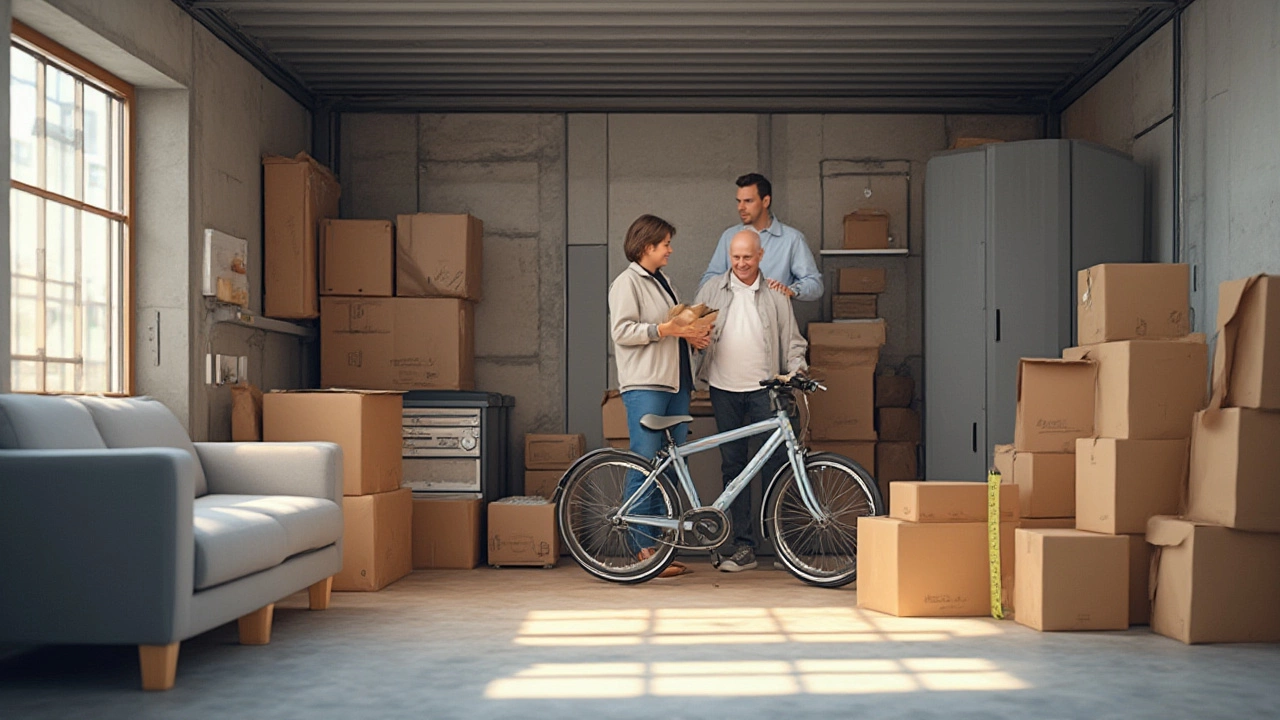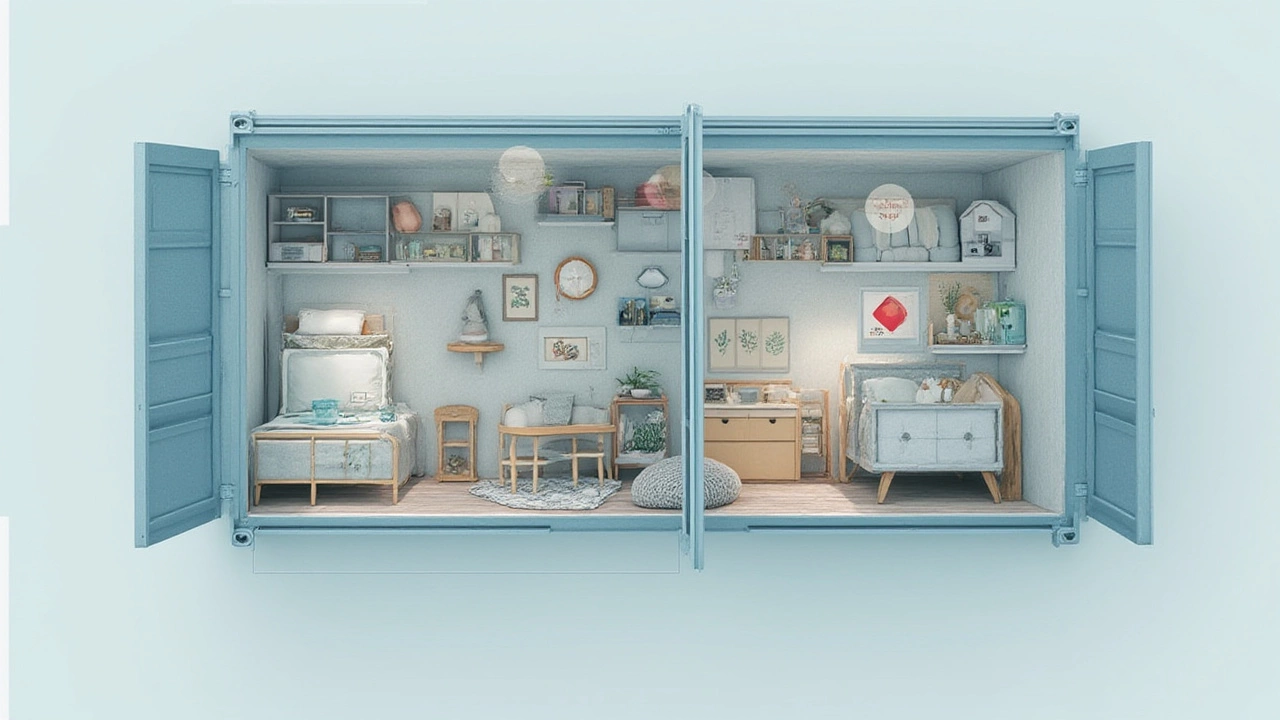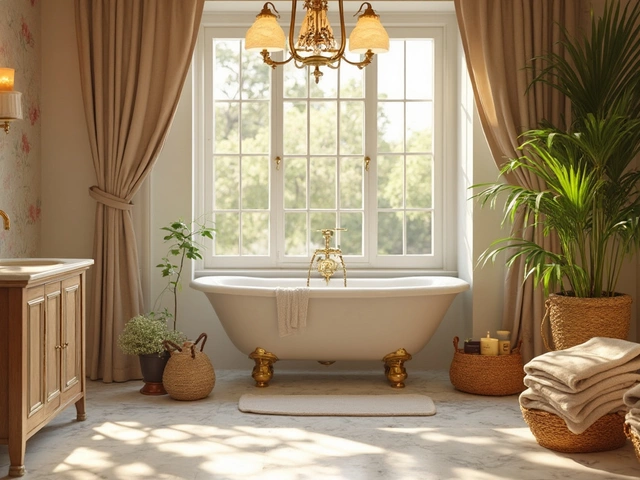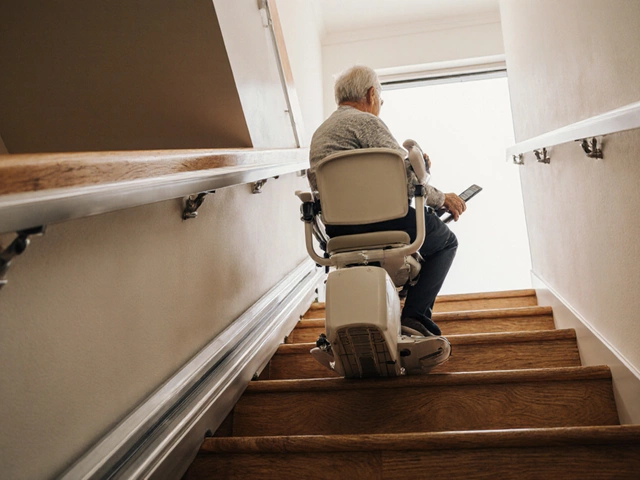What Can You Fit in a 10x20 Storage Unit? Find Out How Many Rooms It Holds

Ever tried figuring out how much fits in a 10x20 storage unit? It’s not just about the numbers. Walking into that big, empty room might make you feel like you can fit your whole life in there. But once the big stuff rolls in—couches, mattresses, dressers—the walls feel like they’re closing in fast. The answer to “How many rooms does a 10x20 storage unit hold?” isn’t cut and dry. It depends on what you own, how you pack, the size of your furniture, and a few other clever tricks. Ready for a reality check and some packing hacks? Let's get into it.
Understanding Storage Unit Dimensions and Space
First things first, let’s talk numbers. A 10x20 storage unit measures ten feet wide, twenty feet long, and usually about eight feet high (sometimes more in newer facilities). That’s 200 square feet of floor space. Picture a standard single-car garage—most units this size are literally designed to fit a car, so they’re substantial.
Now, before you start dreaming of fitting a mansion in there, here’s a quick reality bomb. Although the floor space is 200 square feet, the real trick is stacking. The vertical space gives you roughly 1,600 cubic feet (if you’ve got eight-foot ceilings). How much you really can fit depends on whether you stack to the ceiling, leave walking paths, or just dump everything in a heap (not recommended, trust me).
Here’s a quick breakdown of standard storage unit sizes for context:
| Unit Size | Square Feet | What Fits |
|---|---|---|
| 5x10 | 50 | 1 small room or studio items |
| 10x10 | 100 | 1-2 rooms |
| 10x15 | 150 | 2-3 rooms |
| 10x20 | 200 | 3-5 rooms (average) |
So, that 10x20 storage unit? It’s advertised as fitting a typical three- or four-bedroom house, but let’s not be fooled by marketing. If you live minimalistic, have small furniture, or loft a lot on shelves, you’ll fit more. But if you’ve hoarded decades of stuff, you might be pressed for space. Always measure your biggest items before you commit; couches, beds, and appliances eat more space than you think.
How Many Rooms Does a 10x20 Storage Unit Actually Hold?
Here's the no-nonsense answer: Most folks can fit the contents of a three-bedroom house, give or take. I've seen real-world examples where someone squeezed five rooms of furniture by stacking boxes five high and using every inch. If you're moving from a typical American home—think two couches, a dining set, a few beds, Grandma’s tall dresser, and stuff like kids’ bikes or holiday decorations—that should go in without drama, if you pack smart.
For a more concrete picture, imagine this:
- Living room set (couch, loveseat, recliner, coffee table, TV stand)
- Dining table with six chairs and hutch
- Three queen or full beds (disassembled, of course)
- Dressers and nightstands for three bedrooms
- Washer, dryer, standard fridge
- Several large boxes (think 25-35 per room if you’re including clothes, kitchen junk, and assorted stuff)
Still, if you’re the type who can’t let go of anything—think a mountain of holiday decor, hobby supplies, workout equipment, and old electronics—suddenly it feels tight. Also, oversized furniture (say a sectional that’s much bigger than average or a massive antique armoire) will shrink your available floorspace fast.
The way you pack matters. Stack lighter boxes high, stuff soft things (like pillows and blankets) into drawers or under tables, break down everything possible (beds, tables, bookshelves). Packing efficiency is key. If you just toss items in, you may run out of space shockingly fast.

Packing Tips to Maximize Your 10x20 Storage Unit
Okay, you’ve got your unit and a mountain of boxes. Now what? Smart packing can be the difference between "plenty of room to spare" and sweating bullets as you try to shove in that last mattress. Here are the most effective tips I’ve learned (and tested—yes, even after a late-night move or two).
- Plan first. Make a room-by-room list of what you have—and mark oversized or unusually shaped items. Snap phone photos for easy reference.
- Stack sturdy boxes first, and go vertical. Use stable, same-size boxes so you can stack five or six high safely. Bulging boxes collapse and waste precious inches.
- Take furniture apart. Remove table legs, disassemble beds—anything that can be flat-packed gives you more options.
- Group similar shapes together. Couches, mattresses, tables, and bookcases can take up entire walls if placed awkwardly, but line them up vertically or on their side (if safe)… you buy your space back.
- Label boxes clearly. You’ll thank yourself when you’re digging for winter coats six months later—or trying not to tip the tower of boxes labeled “Random Stuff.”
- Leave a narrow path inside. You don’t have to crawl over stacks when you need that one box hidden in the back. Designate a walkway down one side if you’ll need access.
- Fill hollow spots. Dressers, wardrobes, and washing machines? Stuff the insides with soft items, electronics, smaller boxes, or even shoes—every little bit helps.
- Wrap fragile or valuable items. You never realize how much gets jostled until everything’s stacked high. Pillows, towels, and blankets can double as padding.
And here’s a personal favorite: shelf units can be a game changer. Toss a couple of cheap plastic garage shelves in first, and suddenly you have real vertical storage for boxes, books, or anything you don’t want crushed.
Quick hack—draw a rough floor plan or sketch on a notepad. Plot out where the big items go, then use the rest for boxes and smaller stuff. The more strategic you are, the more you can fit, and the less likely you are to have that "uh-oh" moment at the last piece.
Comparing Storage Needs: Is 10x20 the Right Size For You?
Now, suppose you’re not sure if a 10x20 is even necessary. Maybe you worry about overpaying for empty space, or worse, panic that your whole house won’t fit.
If your furniture is large or you have bulky items (kayaks, upright pianos), it’s better to overestimate. Renters with a one-bedroom apartment, especially if they’re light on stuff, may be shocked by the empty space—they could probably get by with a 10x10 or 10x15. In contrast, if you’re downsizing from a four-bedroom house or combining more than one household’s worth of things, you could max out a 10x20 pretty quickly.
Storage space calculators online can help, but nothing beats measuring your own big pieces. I’ve seen families discover too late their sofa and two king beds take up nearly half their unit when stood on end. And don’t forget about the small stuff. Twenty years’ worth of photo albums and keepsakes can easily fill several stacks of boxes—way more than you think.
Money tip: storage units tend to jump in price at popular sizes. If you’re on a budget, compare the cost per square foot. Sometimes, two smaller units give you better flexibility (and easier access) than one jumbo unit—just don’t forget to factor in convenience if you’ll be grabbing things regularly.
The takeaway? For average households, a 10x20 works for a standard move, a remodel, or storing all your stuff between homes. But it’s worth making a detailed list, considering seasonal things (bikes, lawn mowers, Christmas trees), and even trimming down your belongings before moving day. Don’t pay for space you don’t use—or worse, discover you don’t have enough right when you need it most.





